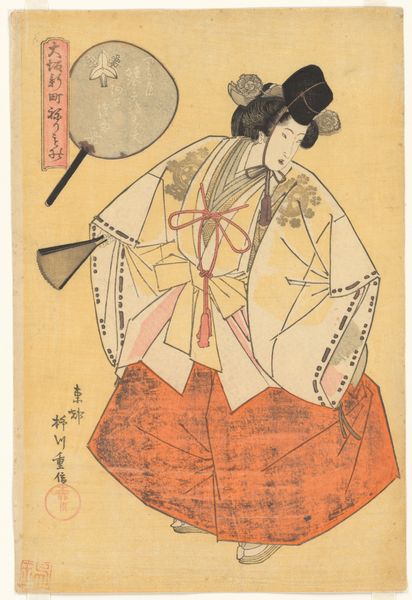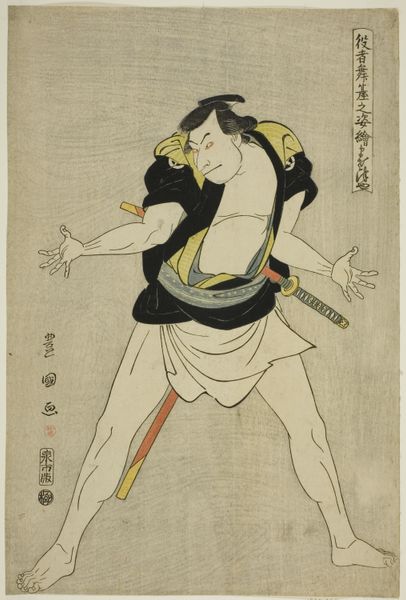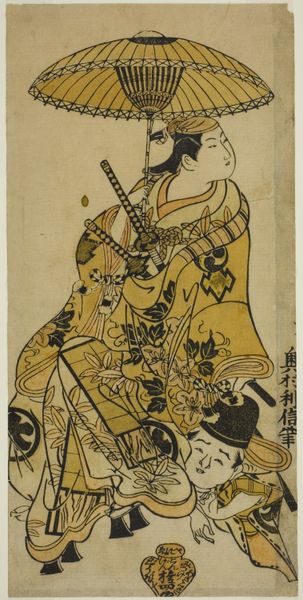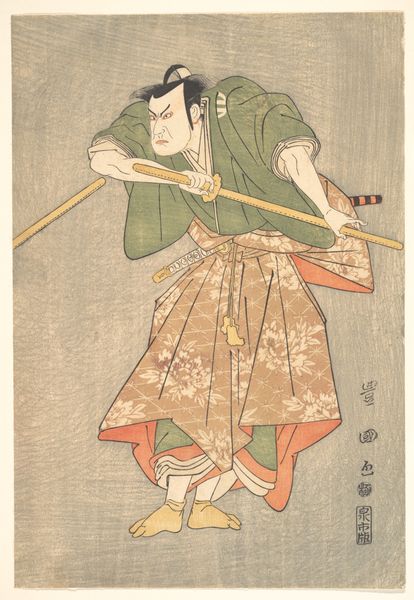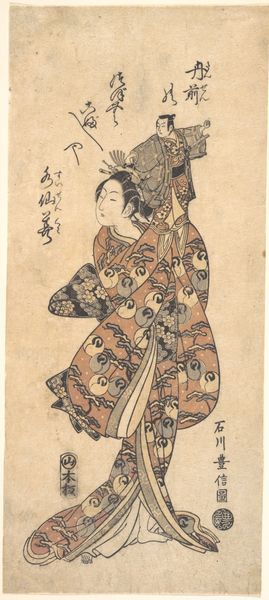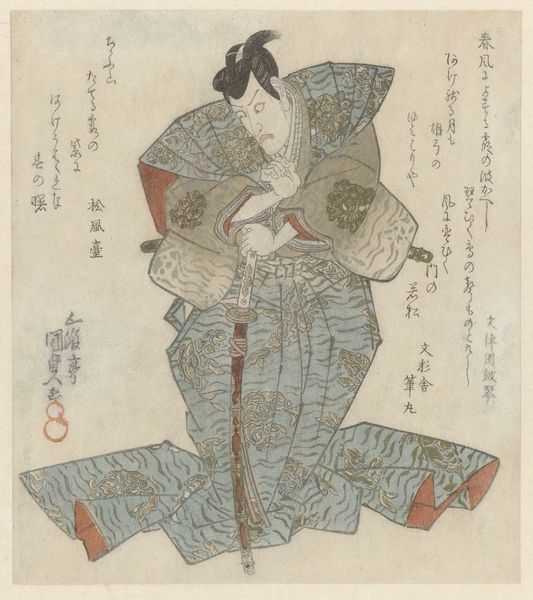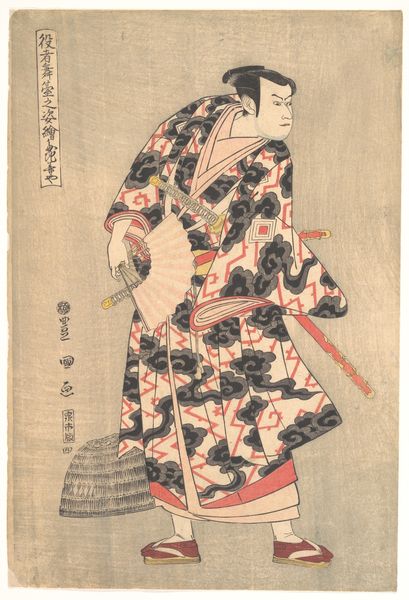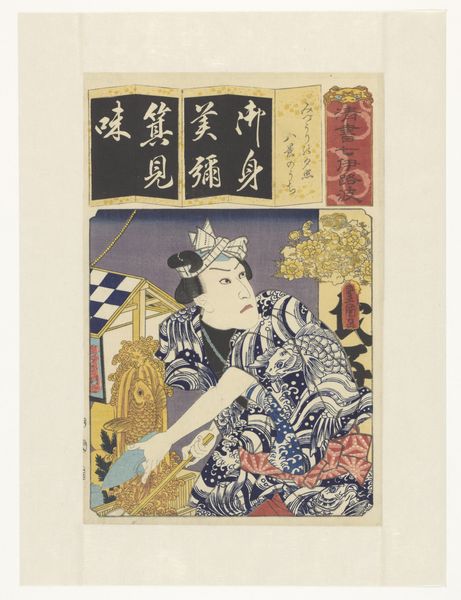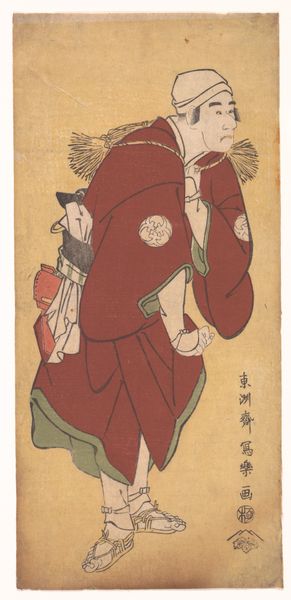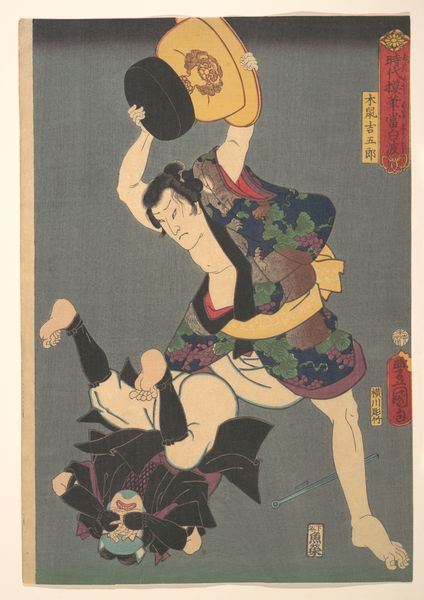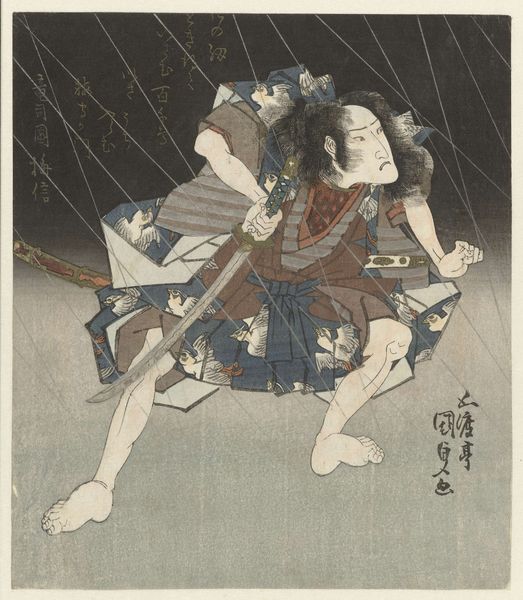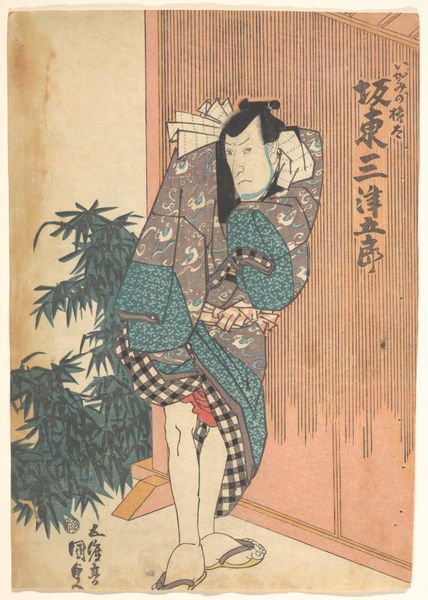
Dimensions: height 47 mm, width 77 mm
Copyright: Rijks Museum: Open Domain
Editor: Here we have *Ex libris voor E.J. van Wisselingh & Co* by Gerrit Willem Dijsselhof, created sometime between 1876 and 1924. It's a woodblock print currently held in the Rijksmuseum. My first impression is that the figure is full of contained rage; that pose is incredibly dynamic! What do you see in this piece? Curator: Well, it's fascinating to see the influence of *ukiyo-e* and Asian art more broadly on European artists during this period. This wasn’t just about aesthetics. The vogue for Japonisme influenced debates on artistic value and challenged Western art's dominance by introducing alternative models. Look at the flattened perspective, the bold outlines. These weren’t simply stylistic choices. How do you think that impacted the art world and cultural perception during that time? Editor: That’s really interesting, it wasn't just adopting a style, but reshaping artistic ideas! It made the Western public question what makes something "good" art if these radically different approaches could be so compelling. So, was there a sense of anxiety around this challenge to traditional artistic values? Curator: Precisely! The establishment felt threatened. New artistic styles can mean shifts in power structures. Who gets to decide what is valuable? Who gets to display it? Where is it displayed? What happens when non-western art gets valorized in the west? Think about how museums started to collect and exhibit this type of art. It speaks to issues of cultural authority, appropriation, and the West's changing relationship with the rest of the world. Editor: I never considered the institutional side of Japonisme like that. Thanks, it is fascinating to consider these prints as more than just beautiful artworks! Curator: It's crucial to see beyond the surface and consider the social and political contexts that shaped both their creation and reception. Now that is an active way to learn about history of art!
Comments
No comments
Be the first to comment and join the conversation on the ultimate creative platform.
